FOR ALL AGES
Here be dragons. And vampires. And giants, sea monsters and minotaurs.
Explore our bestiary of strange creatures from myth and legend. Some are straight from the pages of novels or lifted from the big screen. Others have origins in folklore and mythology. All of them are fearsome creatures that will beguile your kids.
Can you name three monsters that live in the icy waters between Greenland and Norway? Do you know what a yacumama looks like? And who knew that the cute mogwai from the film Gremlins has its inspiration in a legend from China?
The world is a big place and contains many thousands of monster tales. We’ve narrowed things down to 15 of the most popular or intriguing, accounting for geographical spread.
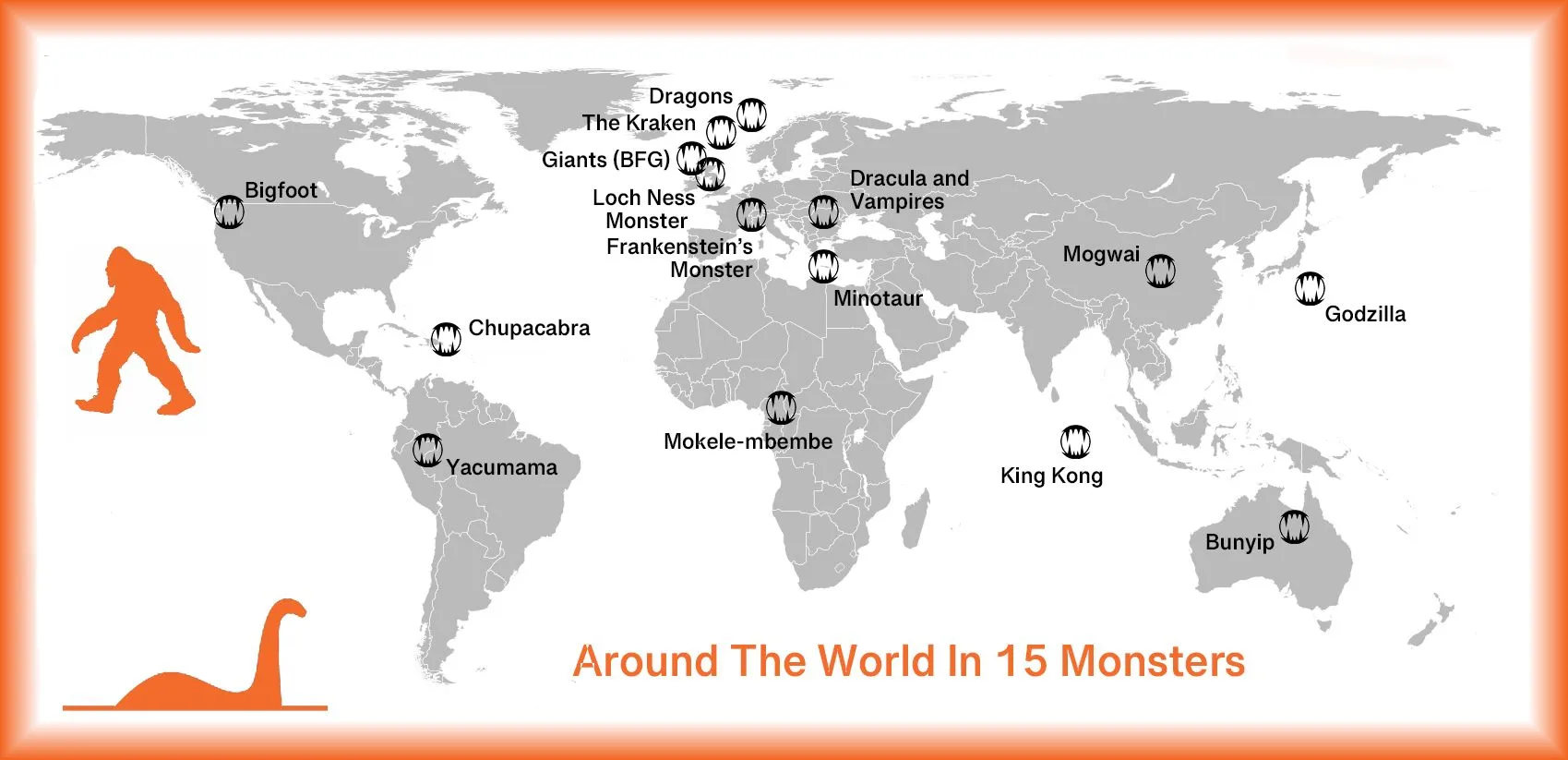
Tales of wild human-like creatures are common in many remote regions of the world. In the Himalayas they are known as the sasquatch, while Australian aborigines speak of yowies. Perhaps the most celebrated is the so-called Bigfoot of Canadian and American lore. Despite many supposed sightings, unusual footprints, and even shaky video footage, no credible evidence has ever been found to suggest that large apes roam the mountains of North America. It’s all fertile territory for filmmakers, though. Young viewers may be familiar with recent films such as Missing Link and Little Foot, which both feature bigfoots or yetis in the title role.
Less well-known, but equally intriguing, is the Bunyip of Australian aboriginal myth. It lurks in swamps, creeks and billabongs waiting to pounce on unsuspecting paddlers. Its appearance varies wildly, depending on who’s telling the story. The commonest form is a kind of seal-dog with shaggy black hair, and sometimes a long neck. The origins of the myth are intriguing to ponder. Some speculate the bunyip arose from rare sightings of seals swimming inland. Others believe the bunyip is a folk memory from the time when aboriginal Australians lived among now-extinct predators.
While many of the creatures in the list are of ancient origin, the chupacabra only emerged in the 1990s. This mysterious monster is described as dog-like - sometimes lizard-like - and it is said to attack livestock to drink their blood (the name chupacabra means ‘goat sucker’). The first accounts arose from Puerto Rico in 1995 and the creature has since been reported all over the Americas. Naturally, no strong evidence has ever been found, and the whole chupacabra myth is presumably down to people ascribing supernatural causes to more mundane animal attacks.
Bram Stoker’s famous creation hails (equally as famously) from the mountainous Romanian province of Transylvania. The immortal, fanged blood-sucker was based on ancient European vampire mythology, and named for the very real 15th century ruler Vlad Dracul. Reviews of the book at the time of its publication (1897) described it as “the last word” on the vampire myth. That turned out to be woefully naive, as any Buffy, Twilight or Count Duckula fan will tell you.
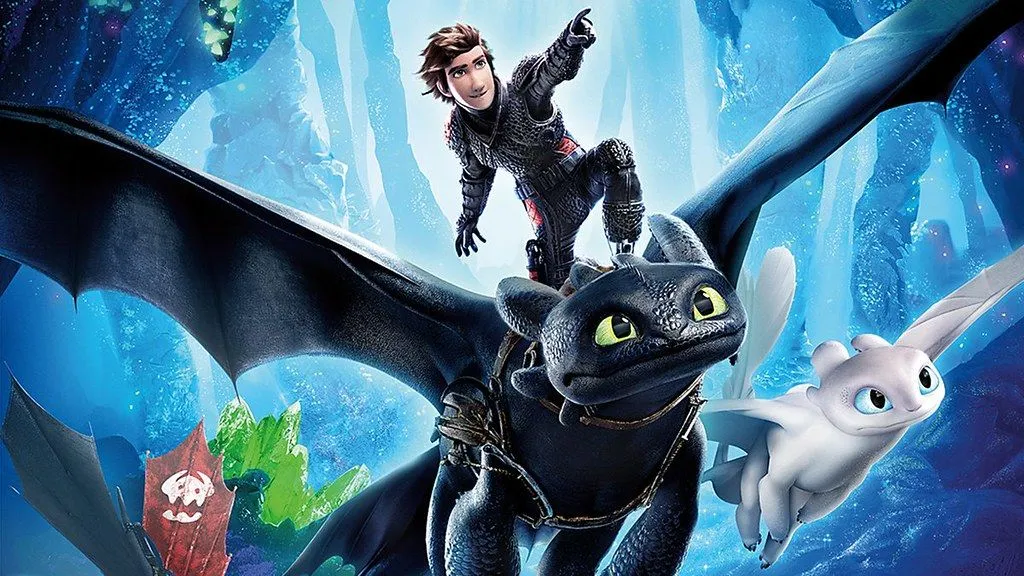
For centuries, dragons were widely believed to exist - simply because nobody had a better explanation for the dinosaur remains uncovered since antiquity. The scaly, fire-breathing monsters are a staple of folklore and fantasy all over the world, from the Medieval dragon that troubled St George to the serpent-like creatures of Chinese myth. Children today might be most familiar with the beasts from the How To Train Your Dragon franchise, which started as a book by Cressida Cowell, and is now a confusing tangle of films, TV series and video games. The stories borrow heavily from Norse mythology, and in-world maps suggest that the ‘Barbaric Archipelago’ (where the action takes place) is in the ocean between Greenland and Norway.
Mary Shelley’s Frankenstein was one of the first novels to feature a monster, and is probably the earliest that remains in print today. As any pedant will tell you, Frankenstein was the name of the scientist rather than the monster itself (which goes unnamed). The creature was stitched together from diverse body parts, then reanimated with electricity. Most of the novel is set in Geneva and the Swiss Alps (where we’ve mapped it), though the story’s thrilling conclusion takes place in the Arctic.
Much like dragons, gigantic humans are a feature of mythology the world over, from Polythemus of ancient Greece, to the Goliath of the Bible to the cannibalistic Si-Te-Cah giants of Native American lore. They also crop up a fair bit in children’s fiction - unsurprising when children are forever gazing upward at their elders. One set of giants that can be (loosely) placed on a map are the foul behemoths from Roald Dahl’s BFG. The Fleshlumpeater, the Maid Masher, the Butcher Boy and their hideous brethren all reside in ‘Giant Country’, a mysterious land that appears to be somewhere north of the British Isles.
The eastern hemisphere’s most famous contribution to our bestiary is surely Godzilla, a giant dinosaur-like monster who lives in the waters around Japan. The character first appeared in a 1954 film and has gone on to become a world cultural icon. Each new generation sees the monster reappear in new form, most recently in a series of big budget movies also featuring that other oversized predator...
The giant ape debuted a little earlier than Godzilla, first appearing on screen in the eponymous 1933 movie. The climactic scene in which the beast stands on the Empire State Building swatting at biplanes has been endlessly parodied by later movies. Kong went on to star in numerous remakes and spin-offs, most recently Godzilla vs. Kong. In most versions of the story, Kong resides on the mysterious Skull Island. Clues in the films, most notably the 2017 film Kong: Skull Island, point to the island lying somewhere in the Indian Ocean.
The Kraken is a great sea monster, often taking the form of a giant squid. It emerges from the depths in any number of films, including two of the Pirates of the Caribbean movies and the Greek mythological yarn Clash of the Titans (and its remake). Despite these filmic sightings in the West Indies and the Aegean, the Kraken’s origins lie much further north. The beast was first namechecked in Scandinavian folklore, living (like the dragons from “How to Train…”) off the coasts of Norway and Greenland.
The sea serpent who supposedly dwells in Loch Ness is a world-famous icon of Scotland. It is often depicted as a plesiosaur wearing a Scottish hat, and occasionally even playing the bagpipes. Sightings (or hoax sightings) of the creature became common in the 20th century, but the creature’s origins lie much further back in time. The first written account of something more-than-fishy in the loch dates from the sixth century, when Saint Columba supposedly repelled the beast with the sign of the cross. Hundreds of photos, of various levels of plausibility, have since emerged, though no definitive evidence has ever been found.
Half man, half bull, the terrifying minotaur was said to guard the labyrinth at the Palace of Knossos in ancient Crete. Many heroes tried to slay the beast until eventually the mighty Theseus of Athens was successful. It’s a legend that stretches back thousands of years, but the minotaur’s cultural descendants are still alive and well. They’ve popped up in countless films, books and TV shows, including the Percy Jackson series, Doctor Who and Hercules to name just a few.
Anyone who’s seen the 1984 Joe Dante movie Gremlins (or its lacklustre sequel) will know the word ‘mogwai’. In the film, the super-cute creature known as Gizmo will reproduce if exposed to water. Feed it after midnight and it will transform into something altogether more wicked - a gremlin. The story borrows heavily from Chinese mythology, where a mogwai is an evil spirit or demon. Tellingly, these spirits reproduce and grow in number during the rainy season, just as Gizmo buds off siblings when accidentally splashed with water.
A water creature or spirit very similar to the Loch Ness Monster is said to live within the basin of the Congo River. Mokele-mbembe are said to be dinosaur-like creatures, often with a single tooth. The leading rational explanation is a folk memory of the black rhinoceros, which was once common in this region.
In fact, fearsome water creatures can be ‘found’ in almost any corner of the planet. The Peruvian Amazon, for example, is said to be inhabited by a giant serpent known as the yacumama. According to local legend the yacumama is the mother of all creatures of the water. Indigenous people routinely blow on conch shells before entering the water, in the belief that the yacumama will reveal herself if present.
Every dinosaur in Britain.... Mapped
Mapped: Where do your kids’ favourite characters live?
Read The Disclaimer
At Kidadl we pride ourselves on offering families original ideas to make the most of time spent together at home or out and about, wherever you are in the world. We strive to recommend the very best things that are suggested by our community and are things we would do ourselves - our aim is to be the trusted friend to parents.
We try our very best, but cannot guarantee perfection. We will always aim to give you accurate information at the date of publication - however, information does change, so it’s important you do your own research, double-check and make the decision that is right for your family.
Kidadl provides inspiration to entertain and educate your children. We recognise that not all activities and ideas are appropriate and suitable for all children and families or in all circumstances. Our recommended activities are based on age but these are a guide. We recommend that these ideas are used as inspiration, that ideas are undertaken with appropriate adult supervision, and that each adult uses their own discretion and knowledge of their children to consider the safety and suitability.
Kidadl cannot accept liability for the execution of these ideas, and parental supervision is advised at all times, as safety is paramount. Anyone using the information provided by Kidadl does so at their own risk and we can not accept liability if things go wrong.
Kidadl is independent and to make our service free to you the reader we are supported by advertising.
We hope you love our recommendations for products and services! What we suggest is selected independently by the Kidadl team. If you purchase using the buy now button we may earn a small commission. This does not influence our choices. Please note: prices are correct and items are available at the time the article was published.
Kidadl has a number of affiliate partners that we work with including Amazon. Please note that Kidadl is a participant in the Amazon Services LLC Associates Program, an affiliate advertising program designed to provide a means for sites to earn advertising fees by advertising and linking to amazon.
We also link to other websites, but are not responsible for their content.
Was this article helpful?
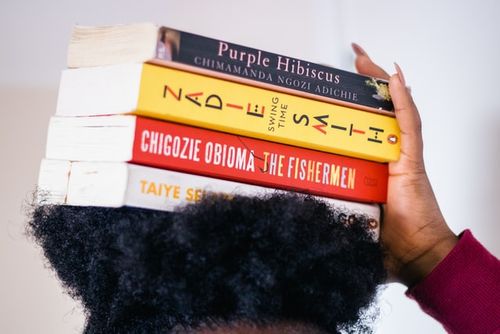
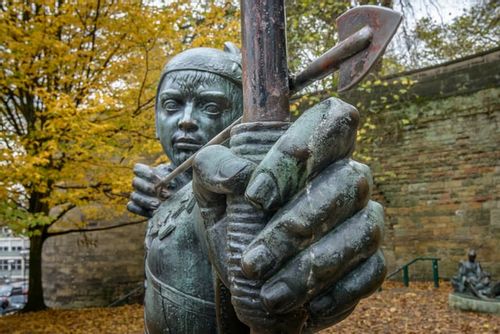
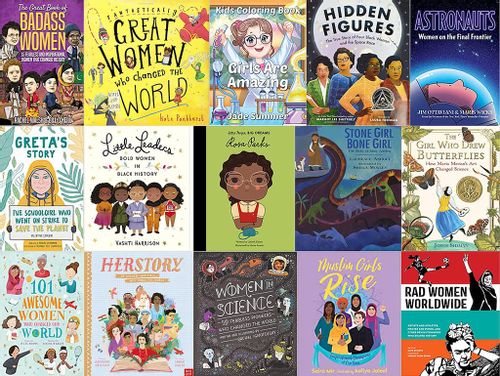
Browse Category

We’ll send you tons of inspiration to help you find a hidden gem in your local area or plan a big day out.



Check your inbox for your latest news from us. You have subscribed to:
Remember that you can always manage your preferences or unsubscribe through the link at the foot of each newsletter.